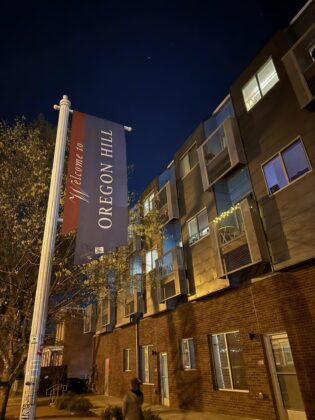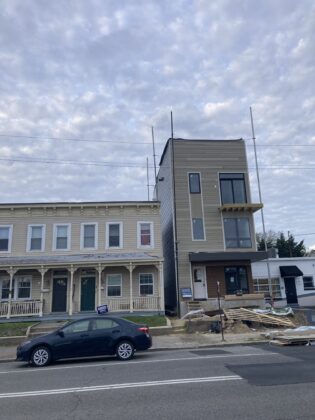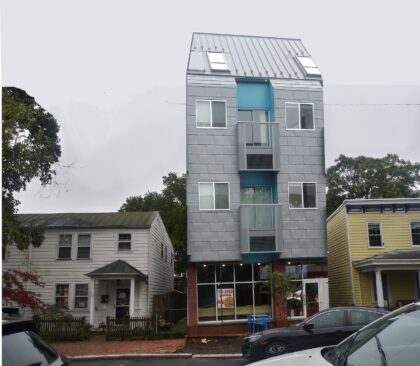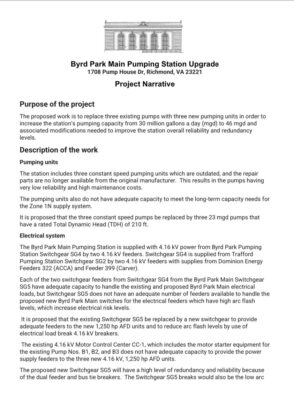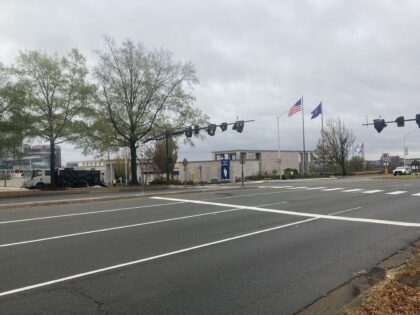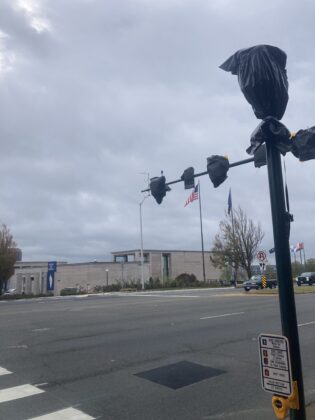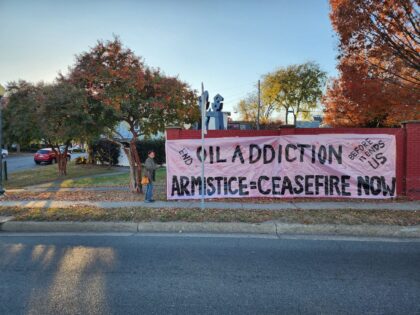Laurel Street neighbor has a critical review of all of the flaws in the City’s proposed zoning “pattern book” for Oregon Hill, as well as the consultant’s $1.2 million contract that includes no public engagement in the development of the “pattern books” for 10 neighborhoods.
All this before this comes up as a topic at the Oregon Hill Neighborhood Association (OHNA)’s online Zoom meeting tonight.
Hello All,
Please find the very troubling FOIA information that I received from the city regarding the “pattern book” zoning information now compiled by the city for Oregon Hill and several other neighborhoods. (Please see links from the city below.) To make it easier to download, I have also made screen-saves from just the Oregon Hill portion of these large files. (Please see attachments to this e-mail.)
I am extremely concerned about the large amount of incorrect information in this “pattern book” for Oregon Hill. As you may know, we strongly requested that Oregon Hill representatives participate in the compilation of the “pattern book” and to meet with the consultants in order to share our wealth of information about the neighborhood. This request was flatly denied by city Planning Director Kevin Vonck, who stated that the consultant preparing the “pattern book” for Oregon Hill would NOT return calls from representatives of Oregon Hill because it would generate “billable hours” for the city.
As a result, the “pattern book” for Oregon Hill is an embarrassment of inaccurate and misleading information. This very troubling because the city undoubtedly will try to use this misinformation to justify changing the neighborhood’s appropriate Residential R-7 zoning.
I will try here to summarize some of the significant incorrect information in the “pattern book” that the city and consultants created to describe current zoning conditions for the Oregon Hill neighborhood:
-In the “pattern book” report on Oregon Hill, the basic map and boundaries of the Oregon Hill Historic District are not even correct. The study did not include the 3-1/2 blocks of Oregon Hill north of the expressway between Cary and Idlewood Streets that include R-7 and B-3 zoning.
-The “pattern book” does not even correctly provide the “Current Zoning” in Oregon Hill. The “Current Zoning” illustration does not show the Business B-1 zoned areas of Oregon Hill and, therefore, those B-1 properties are shown as non-conforming with the R-7 zoning “Due to Use.” (Did the city’s consultant not have access to the City Zoning Map?)
-The dates for Oregon Hill homes in the “pattern book” are grossly inaccurate in the “Historic Pattern” and “Historic Context” illustrations. The block study for the 300 block of Cherry and Laurel shows all but four houses constructed in the 20th century, when, in fact, all but one house was constructed in the 19th century. The “Historic Pattern” for the neighborhood inaccurately shows most houses constructed in the 20th century rather than the 19th century. (Does the city not have access to the Oregon Hill Historic District nomination to the National Register of Historic Places which correctly shows the construction dates for every building?)
-Most damning is that the “pattern book” does not even illustrate that, regarding two of the most important metrics of the R-7 zoning, Oregon Hill is approximately within 99% conformity with the 35 foot “Height” limit and probably within 90+% conformity with the “55% Maximum Lot Coverage” rules. (Why was the study tasked with emphasizing only non-conformity to zoning?)
-The “Parcel Size” and “Parcel Frontage” non-conformity with the R-7 zoning is inaccurately shown throughout Oregon Hill. The R-7 zoning allows for a reduced lot width of 18 feet and minimum lot size of 2200 square feet for the many single-family attached homes in Oregon Hill. On just my block face alone on the 400 block of Laurel, my home and five other attached single-family houses are shown on the “Nonconformity” map as nonconforming to the zoning “Due to Form” when actually the properties fully conform to the zoning.
-The “Block Setbacks Analysis” illustration incorrectly implies that the Oregon Hill streetscapes do not meet setback requirements, while in fine print their own note indicates that the diagram “… is not accounting for zero setback on attached buildings.”
-The illustration of “Special Use Permit” applications in Oregon Hill implies that it is somehow undesirable that there were 18 Special Use Permits in the neighborhood. In fact, the Special Use Permit process has worked well; it has allowed the neighborhood to achieve remarkable successes in negotiations with developers, including the 6 SUPs shown for the Overlook, Parsons Row and Victory Rug condominium developments. Because Oregon Hill is adjacent to VCU, it would be disastrous for our fragile historic district if the zoning rules were loosened so that no SUP’s are ever required.
-The “Nonconformities” illustration incorrectly classifies many Oregon Hill properties as nonconforming “Due to Use.” The condominiums at the Overlook and the Parsons Row as erroneously listed as nonconforming “Due to Use” when, in fact, they are single-family attached homes. The study incorrectly classifies such properties as 316 S. Cherry, 411 S. Cherry, and 712 Spring, that have long ago been converted to single family homes, as nonconforming “Due to Use.” The study also incorrectly classifies the former Mama Zu restaurant site at 501 Pine as nonconforming “Due to Use” when it is within the appropriate B-1 Business zoning.
In summary, because the city refused to allow neighborhood representatives to participate in the process, the “pattern book” data for Oregon Hill is embarrassingly flawed. The “pattern book” conclusion that Oregon Hill is nonconforming with our R-7 zoning by 82% due to form and usage is grossly inaccurate and must be corrected.
With all of its inaccuracies, in appears that the main purpose of the “pattern book” is to justify rezoning the neighborhood.
While no zoning is perfect, the R-7 zoning rules do a very good job in supporting Oregon Hill’s historic fabric in form and function. The R-7 zoning has allowed the historic Oregon Hill neighborhood to thrive and has admirably protected the historic streetscapes from inappropriate development. In the most important metrics of height, maximum lot coverage and usage, the neighborhood conforms to the R-7 zoning to a remarkable extent, well-within the 90th percentile.
As befitting the rare 19th century Oregon Hill Historic District, the stated intent of the R-7 Single- and Two-family Urban Residential District per city code Sec. 30-413.1 is to “preserve and enhance the established character of older urban residential neighborhoods… characterized by a mixture of detached and attached single- and two-family dwellings situated on small lots with narrow yards and modest setbacks. The district regulations…are intended to encourage continued improvement and efficient use of existing residential buildings and their accessory structures, while ensuring that infill development will be compatible with the established character.”
One thing that the “pattern book” study does get correct, as shown in the “Residential Topology” illustration, is to illustrate that it is beyond dispute that Oregon Hill is a Residential neighborhood. The Residential R-7 zoning is the appropriate zoning for the neighborhood.
Sincerely,
Charles
City of Richmond, Neighorhood Scale Analysis for Oregon Hill [excerpt from city wide scale analysis]
City of Richmond, Block analysis of Oregon Hill [excerpt from city wide block analysis]
Editor’s note: From the beginning of the City’s re-zoning push, the Oregon Hill Neighborhood Association (OHNA) has been steadfast in defending itself.
2024 OHNA zoning resolution
Whereas, the Oregon Hill Historic District is listed on the National Register of Historic places and the Virginia Landmarks Register as a rare intact historic district built as a working class neighborhood, and
Whereas, Oregon Hill is a built-out neighborhood of two-story dwellings and businesses with great density, having the majority of the homes attached on one or both sides, and
Whereas, Oregon Hill residents fought long and hard to obtain our current R-7 residential zoning, and
Whereas, the current R-7 zoning with a 35 foot height limit matches the neighborhood’s historic fabric and helps to protect the historic character of Oregon Hill, and
Whereas, the current R-7 zoning has allowed the Oregon Hill Historic District to thrive, with very few empty lots, and
Whereas, Section 17.05 of the Richmond City Charter states that a duty of the Planning Commission is to, “… preserve historical landmarks …”, and
Whereas, Oregon Hill is adjacent to and has faced encroachment by the adjacent Virginia Commonwealth University, and
Whereas, the City of Richmond values the character of its unique historic districts which make Richmond a special place to live, and must protect the character of our historic district through appropriate zoning,
Therefore, be it Resolved that the Oregon Hill Neighborhood Association strongly urges the Richmond Planning Commission and the Richmond City Council to respect and maintain the R-7 zoning or its equivalent with a 35′ height limit within the Oregon Hill Historic District, in keeping with the current designation’s purpose in preserving the character of older urban neighborhoods in the city’s inner areas.
